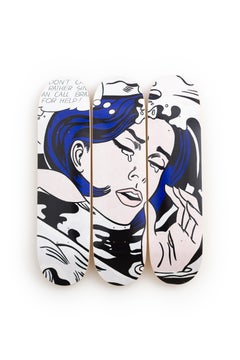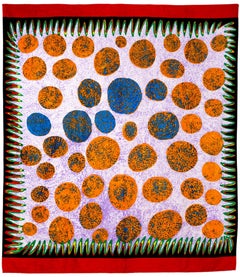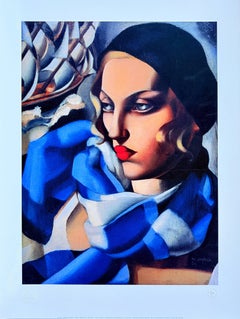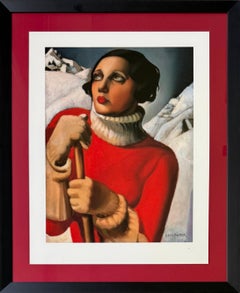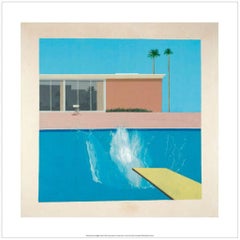Digital More Art
2010s Pop Art Digital More Art
Wood, Digital
2010s Pop Art Digital More Art
Textile, Digital
2010s Modern Digital More Art
Giclée
2010s Modern Digital More Art
Giclée
2010s Contemporary Digital More Art
Inkjet
21st Century and Contemporary Abstract Digital More Art
Archival Ink, Giclée, Archival Pigment
21st Century and Contemporary Abstract Digital More Art
Archival Ink, Giclée, Archival Pigment
21st Century and Contemporary Abstract Digital More Art
Archival Ink, Giclée, Archival Pigment
21st Century and Contemporary Abstract Digital More Art
Archival Ink, Giclée, Archival Pigment
1990s Modern Digital More Art
Paper, Digital
1990s Modern Digital More Art
Paper, Digital
21st Century and Contemporary Abstract Digital More Art
Archival Ink, Giclée, Archival Pigment
2010s Pop Art Digital More Art
Wood, Digital
2010s Contemporary Digital More Art
Giclée
1990s Modern Digital More Art
Paper, Digital
21st Century and Contemporary Modern Digital More Art
Giclée
21st Century and Contemporary Abstract Digital More Art
Archival Ink, Giclée, Archival Pigment
21st Century and Contemporary Abstract Digital More Art
Archival Ink, Giclée, Archival Pigment
21st Century and Contemporary Abstract Digital More Art
Archival Ink, Giclée, Archival Pigment
Mid-20th Century French School Digital More Art
Digital, Monoprint
21st Century and Contemporary Abstract Digital More Art
Archival Ink, Giclée, Archival Pigment
21st Century and Contemporary Contemporary Digital More Art
Enamel
2010s Pop Art Digital More Art
Canvas, Giclée
2010s Art Nouveau Digital More Art
C Print, Archival Paper, Giclée
21st Century and Contemporary Contemporary Digital More Art
Enamel
21st Century and Contemporary Abstract Digital More Art
Archival Ink, Giclée, Archival Pigment
21st Century and Contemporary Abstract Digital More Art
Archival Ink, Giclée, Archival Pigment
2010s Pop Art Digital More Art
Wood, Digital
21st Century and Contemporary Contemporary Digital More Art
Digital
21st Century and Contemporary Abstract Digital More Art
Archival Ink, Giclée, Archival Pigment
21st Century and Contemporary Abstract Digital More Art
Archival Ink, Giclée, Archival Pigment
2010s Pop Art Digital More Art
Wood, Digital
2010s Contemporary Digital More Art
Giclée
21st Century and Contemporary Modern Digital More Art
Giclée
21st Century and Contemporary Modern Digital More Art
Giclée
2010s Pop Art Digital More Art
Canvas, Giclée
2010s Pop Art Digital More Art
Wood, Digital
2010s Pop Art Digital More Art
Wood, Digital
1990s Pop Art Digital More Art
Canvas, Giclée
2010s Pop Art Digital More Art
Wood, Digital
1990s Pop Art Digital More Art
Canvas, Giclée
2010s Pop Art Digital More Art
Canvas, Giclée
2010s Pop Art Digital More Art
Inkjet
2010s Pop Art Digital More Art
Canvas, Giclée
1990s Pop Art Digital More Art
Paint, Paper, Pen, Pencil, Color, Giclée
2010s Pop Art Digital More Art
Wood, Digital
2010s Abstract Digital More Art
Cotton, Digital, Pigment, Archival Pigment, Digital Pigment
2010s Abstract Digital More Art
Cotton, Digital, Pigment, Archival Pigment, Digital Pigment
2010s Abstract Digital More Art
Cotton, Digital, Pigment, Archival Pigment, Digital Pigment
2010s Pop Art Digital More Art
Wood, Digital
2010s Abstract Digital More Art
Cotton, Digital, Pigment, Archival Pigment, Digital Pigment
2010s Abstract Digital More Art
Cotton, Archival Ink, Archival Paper, Digital, Archival Pigment, Digital...
1980s Pop Art Digital More Art
Giclée, Lithograph
2010s Pop Art Digital More Art
Canvas, Giclée
21st Century and Contemporary Abstract Digital More Art
Archival Paper, Digital
2010s Pop Art Digital More Art
Canvas, Giclée
1970s Pop Art Digital More Art
Canvas, Giclée
2010s Contemporary Digital More Art
Mixed Media, Oil, Acrylic, Color, Giclée
2010s Pop Art Digital More Art
Wood, Digital
2010s Pop Art Digital More Art
Plexiglass, Digital, Lenticular
